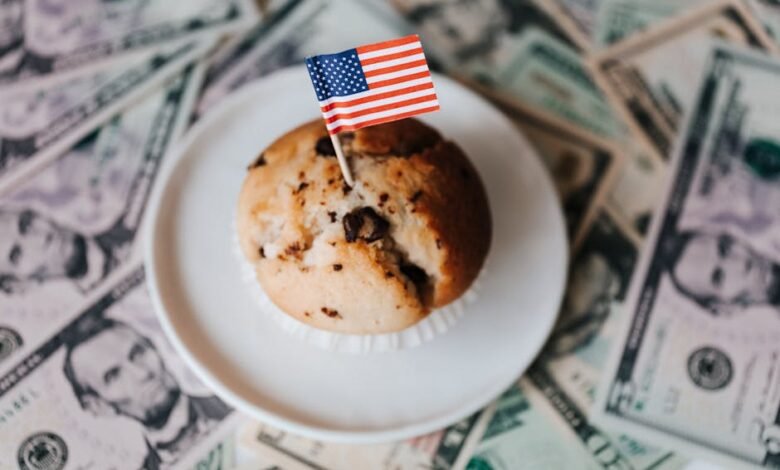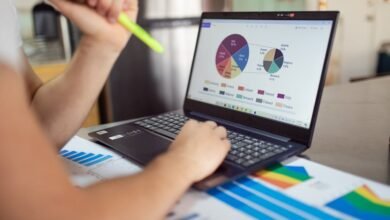Shocking: Americans Now Welcoming Inflation, Here’s Why!

Shifts in American Perspectives on Inflation: A Turning Point
In recent times, the discussions surrounding inflation have shifted significantly amongst the American populace. After experiencing persistent inflationary pressures over the past few years, it appears that many individuals are beginning to revise their outlooks on the economy. Economics is inherently subject to the ebbs and flows of consumer sentiment, which means those feelings can profoundly impact behaviors, spending habits, and policy decisions. This blog post delves into American views on inflation, examining recent trends, the context of economic indicators, and what these changes could mean for the future of the economy.
The Current State of Inflation
To appreciate the current sentiments regarding inflation, we must first analyze the factors that have contributed to its rise. Over the past few years, America has witnessed a surge in price levels across various sectors, including housing, food, and energy. In early 2022, inflation rates soared, reaching their highest levels in more than four decades. This was attributed to a myriad of reasons including supply chain disruptions, rising commodity prices, increased consumer demand post-pandemic, and geopolitical tensions affecting global energy supplies.
However, recent reports suggest that inflation rates have begun to stabilize, leading many Americans to reassess their perceptions. By mid-2023, inflation figures started to show signs of easing, which has led to a notable change in consumer attitudes. Individuals who were previously anxious about rising prices have become more hopeful about the economy’s recovery, which bodes well for future consumer spending and economic growth.
Survey Insights and Consumer Sentiment
Various surveys conducted over the past few months signify an optimistic shift in consumer sentiment. According to data from the University of Michigan’s Surveys of Consumers, there has been a noticeable uptick in consumer confidence. Participants indicated that their expectations for inflation in the coming year have decreased, suggesting a greater belief in economic stability returning. This optimistic outlook reflects the general population’s desire for a return to normalcy and predictability in pricing.
Moreover, surveys indicate that many Americans are beginning to perceive inflation not as a chronic condition but rather as a temporary phase marked by specific triggers. This perspective allows individuals to make more informed financial decisions rather than succumbing to panic-driven reactions.
The Role of the Federal Reserve
As consumer confidence begins to improve, the Federal Reserve’s monetary policy will also play a crucial role in shaping perceptions of inflation. Over the past few years, the Fed has employed a series of aggressive interest rate hikes in a bid to curb inflation. By managing the money supply and adjusting interest rates, the Fed aims to stabilize the economy while fostering conditions for sustainable growth.
This approach has resulted in some controversy among various economic circles. Critics argue that hiking interest rates too quickly could inadvertently trigger a recession, while proponents advocate for a gradual return to stable economic conditions. The Fed must strike a delicate balance: managing inflation expectations while supporting an economic landscape that promotes growth.
Understanding Inflation Expectations
One of the most critical aspects of inflation is consumer inflation expectations. These beliefs influence spending and saving habits, making them key indicators for economic health. When individuals expect prices to rise, they may choose to spend more now rather than later, often exacerbating inflationary pressures. Conversely, if people anticipate that inflation will stabilize or decline, it could prompt them to save more for the future, easing demand.
The recent decline in inflation expectations may have profound implications for economic dynamics. It suggests that individuals are feeling a greater sense of financial security and are more comfortable engaging in consumer spending. This uptick in spending can lead to a ripple effect in various sectors, ultimately bolstering economic performance.
Industry Perspectives: Businesses Adapting to Change
As consumer sentiment shifts, businesses must also adapt to the changing landscape. Many companies are increasingly focusing on mitigating costs and managing pricing strategies to remain competitive. Some are finding innovative solutions to manage supply chains better, while others are adjusting their hiring practices in response to fluctuating consumer demand.
In sectors where consumer demand is rising, businesses are capitalizing on this optimism by investing in product development and marketing initiatives. Conversely, companies in areas still facing challenges may adopt a more cautious approach, preparing for potential headwinds. Overall, the ability of businesses to respond to consumer sentiment will play a pivotal role in shaping economic recovery in the wake of inflationary pressures.
The Impact of Tariffs and Global Economies
The landscape of inflation is also influenced by factors beyond the U.S. borders. Tariffs and international trade relationships affect the prices of goods and services available in America. The latest policies related to tariffs on imports can also lead to increased costs for consumers. Therefore, the efficacy of U.S. trade relations will be instrumental in the long-term stabilization of inflation.
Global economic disruption, especially in terms of energy prices, has marked fluctuations in inflation rates. Events beyond control, such as natural disasters or significant political changes, can cause unexpected price instability. Thus, Americans’ views on inflation will continue to evolve in tandem with these international developments as they remain a crucial part of the economic conversation.
The Road Ahead: A Balancing Act
As perceptions about inflation shift, it’s clear that both economic policies and consumer sentiment will play vital roles in determining the past year’s feat and the road ahead. Continuous monitoring of key indicators, such as inflation rates, consumer confidence, and Federal Reserve policy decisions, will remain imperative for understanding the evolving narrative.
While hope is emerging from the public’s changing sentiments, caution is still warranted. Economic tides can swiftly change, and external pressures can lead to unforeseen consequences. The essence of navigating this landscape lies in the ability of consumers, businesses, and policymakers to remain adaptable and proactive in their responses to economic changes.
Conclusion
In summary, American views on inflation are undergoing a significant transformation as recent trends show signs of stabilization. As consumer confidence grows, the expectation of sustained inflation decreases, indicating a shift toward a more optimistic outlook. The role of the Federal Reserve in shaping monetary policy will be critical going forward, as will the impact of international factors. Understanding these emerging perspectives will be paramount for effectively navigating the economy in the years ahead.
- The understanding of inflation is evolving as Americans show signs of optimism.
- Inflation rates have started to ease, leading to increased consumer confidence.
- The Federal Reserve’s monetary policies continue to influence economic conditions.
- Consumer inflation expectations are vital for economic growth and spending patterns.
- Businesses must adapt to changing consumer perceptions and market dynamics.
- Global events and trade relations play an essential role in inflation rates.
- The road ahead requires a careful balancing act between optimism and caution.





